Complete Solutions to Exercise -3 Part-I of chapter AROMATIC COMPOUNDS of Class 11 book with complete answers and questions
| Class 11 | CHEMISTRY |
| Chapter | AROMATIC COMPOUNDS |
| RESONANCE NEW | Exercise -3 Part-I |
| Number Of Questions | 36 |
| Academic Year | 2023-24 |
Assertion : In strongly acidic solution, aniline becomes less reactive towards electrophilic reagents .
Reason : Due to protonation of amino group the lone pair of electrons on nitrogen is not available for donation to benzene ring by resonance .
View SolutionHow would you synthesis 4-methoxyphenol form bromobenzene in NOT more than five step ? State clearly the reagents used in each step and show the structure of intermediate compounds in your synthetic scheme.
View SolutionWrite structures of the products A, B,C,D and E in the following scheme.

View Solution
View SolutionHow would you carry out the following conversion efficiently using NOT more than four steps? Give the appropriate reagent(s) and reaction condition(s) empolyed in each step.
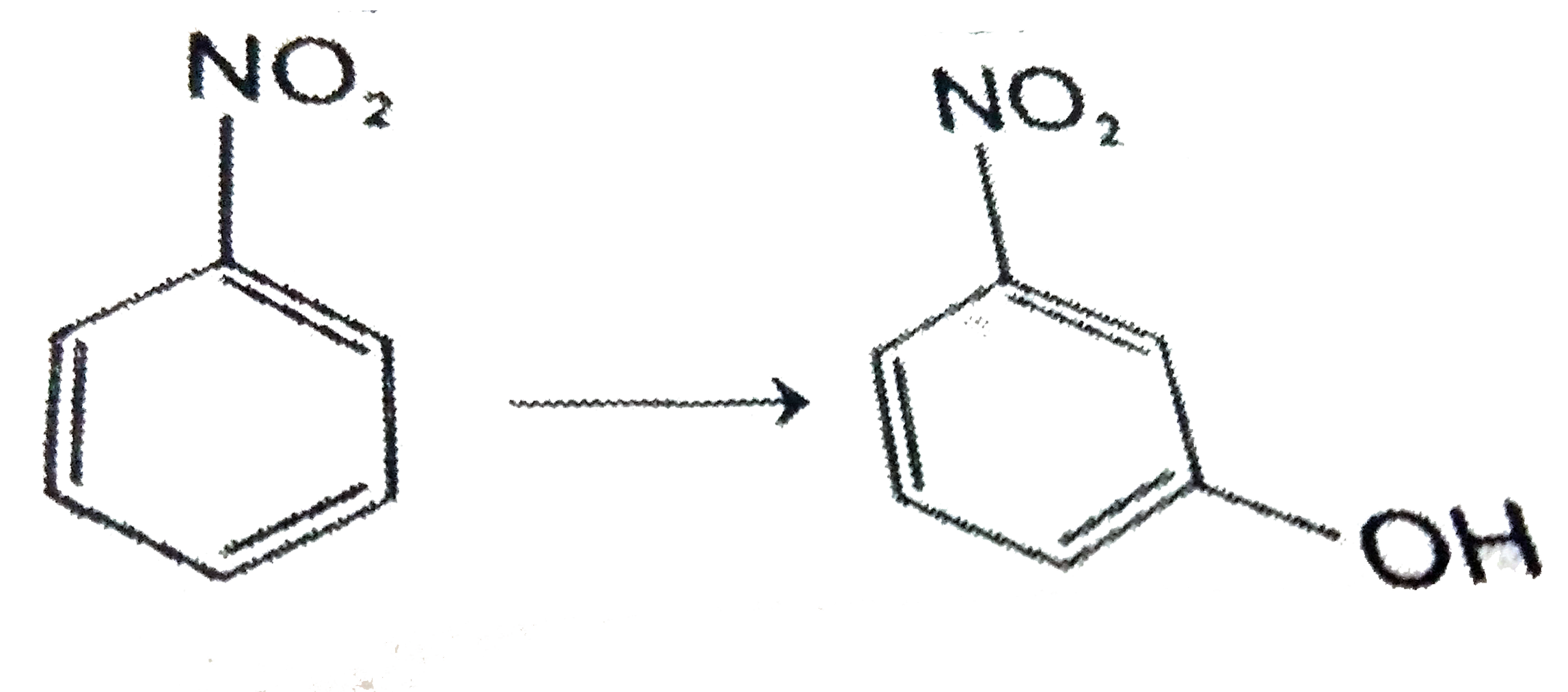
View Solution
Identify A, B, C, D and write the balanced chemical equations of formation of A to B and A to C.
View Solution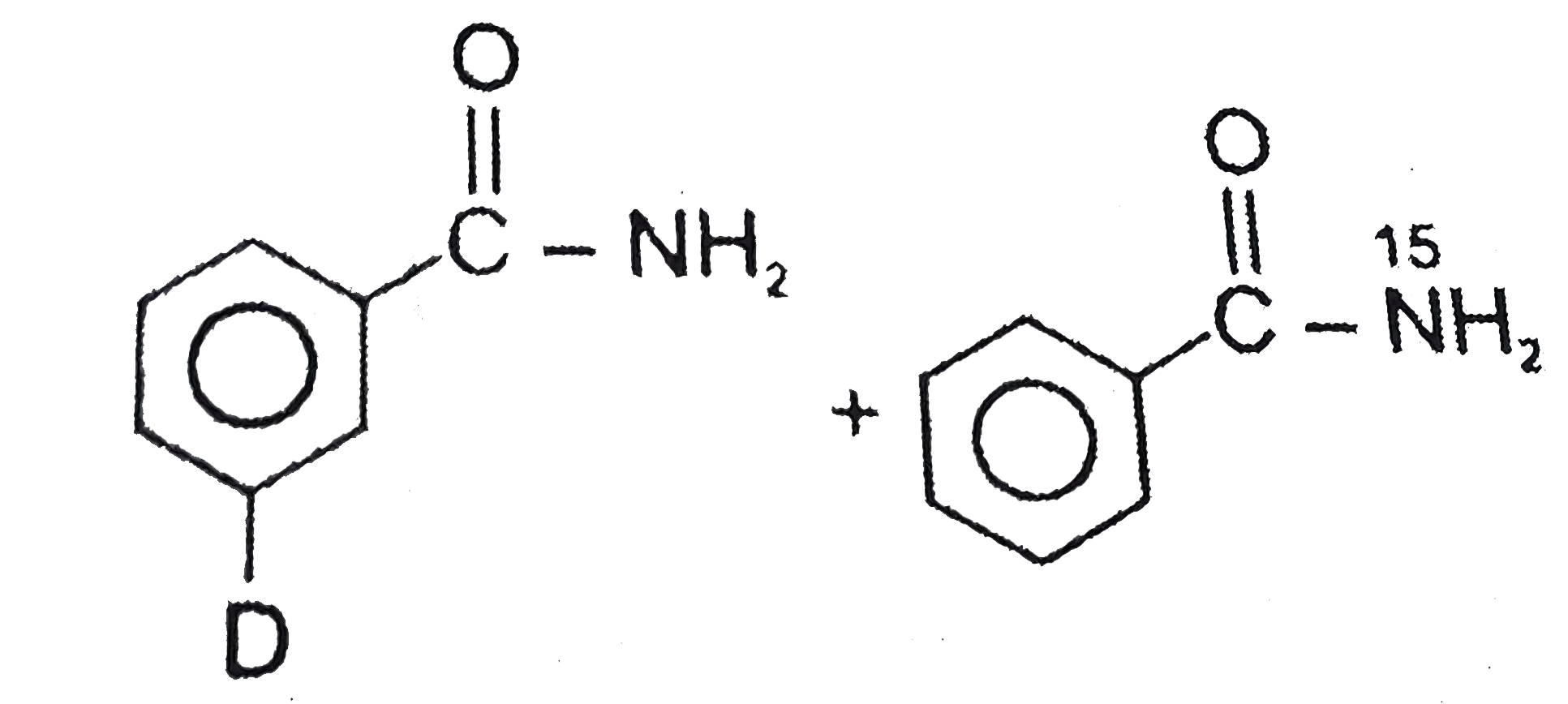 under Hofmann conditions will give:
under Hofmann conditions will give:
View Solution
Which reagent (X) is used to convert I to II
View SolutionConsider the pathway of a well known organic reaction

Which step is rate determining step?
View Solution`CH_(3) NH_(2) + CHCl_(3) + KOH rarr` Nitrogen containing compound `+ KCl + H_(2)O`. The nitrogen-containing compound is:
View Solution
What are P & Q.
View SolutionReimer-Tiemann reaction introduces an aldehyde group on to the aromatic ring of phenol, ortho to the hydroxyl group. This reacrtion involves electrophilic aromatic subsititution. It is a general method for the synthesis of subsituted salicyladehydes as depiced below:
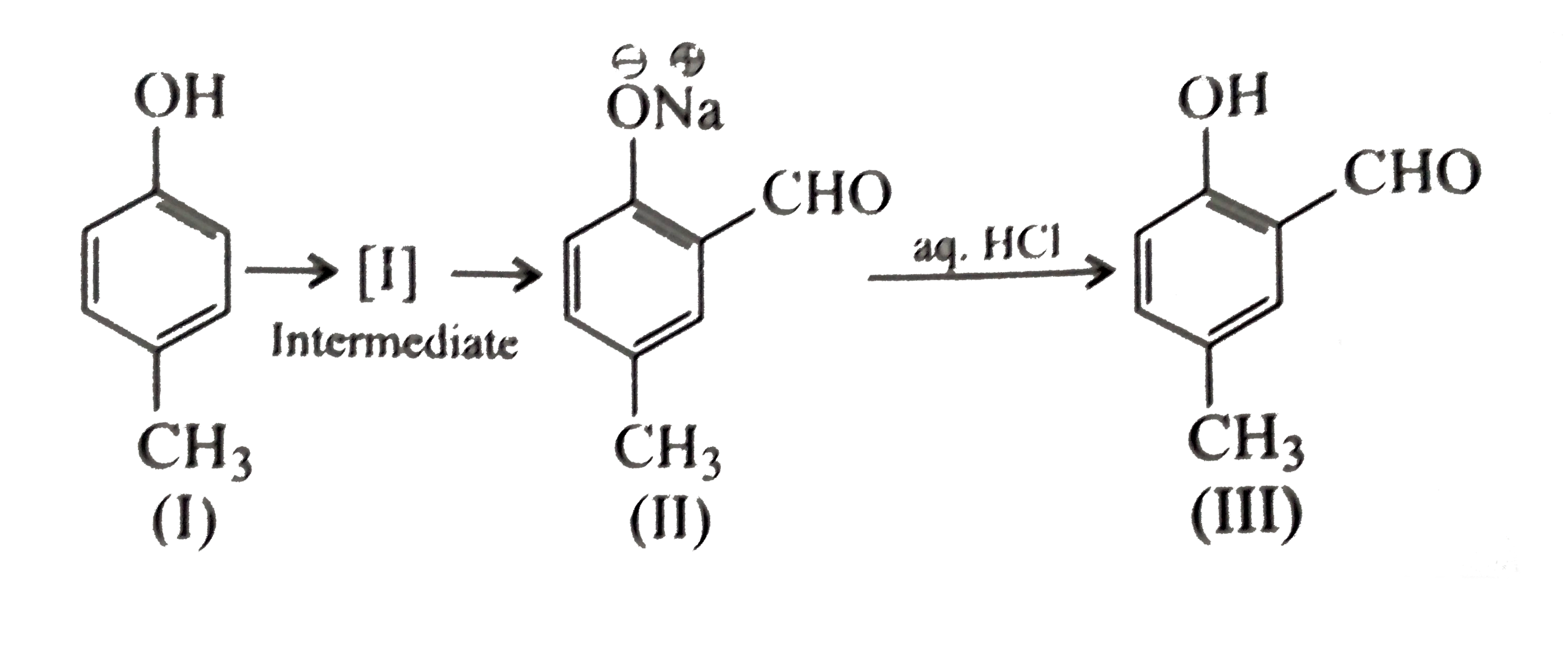
Which one of the following reagents is used in the above reaction ?
View SolutionReimer-Tiemann reaction introduces an aldehyde group on to the aromatic ring of phenol, ortho to the hydroxyl group. This reacrtion involves electrophilic aromatic subsititution. It is a general method for the synthesis of subsituted salicyladehydes as depiced below:
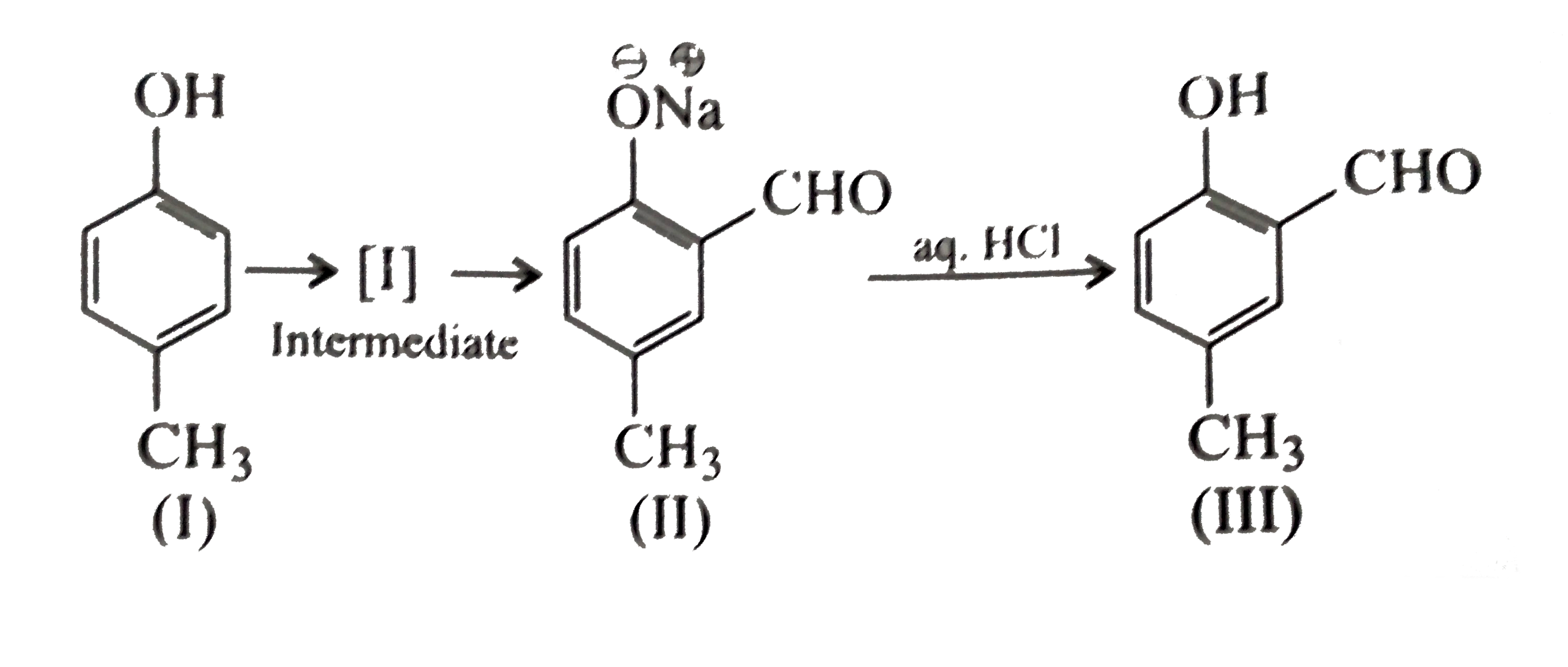
The electrophile in this reaction is:
View SolutionReimer-Tiemann reaction introduces an aldehyde group on to the aromatic ring of phenol, ortho to the hydroxyl group. This reacrtion involves electrophilic aromatic subsititution. It is a general method for the synthesis of subsituted salicyladehydes as depiced below:

Which one of the following reagents is used in the above reaction ?
View SolutionIn the reaction
 is/are:
is/are:
View SolutionMatch the reactions in Column I with appropriate options in Column II.
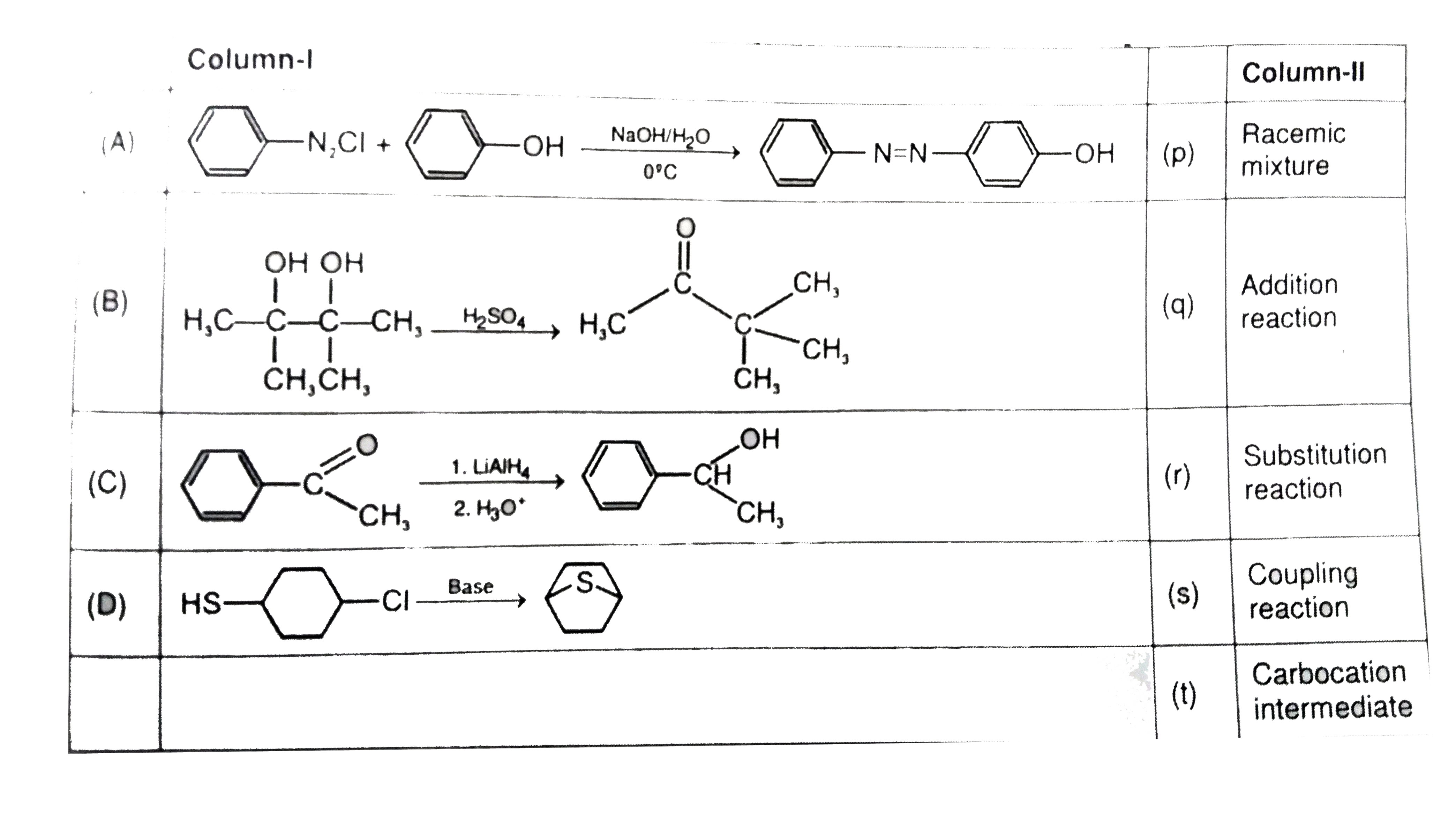
View SolutionThe major product of the following reaction is :

View SolutionAmongst the compounds given, the one that would form a brilliant colored dye on treatment with `NaNO_2` in dil. `HCl` followed by addition to an alkaline solution of `beta-`naphthol is
View SolutionIn the following reaction, the products formed is(are)
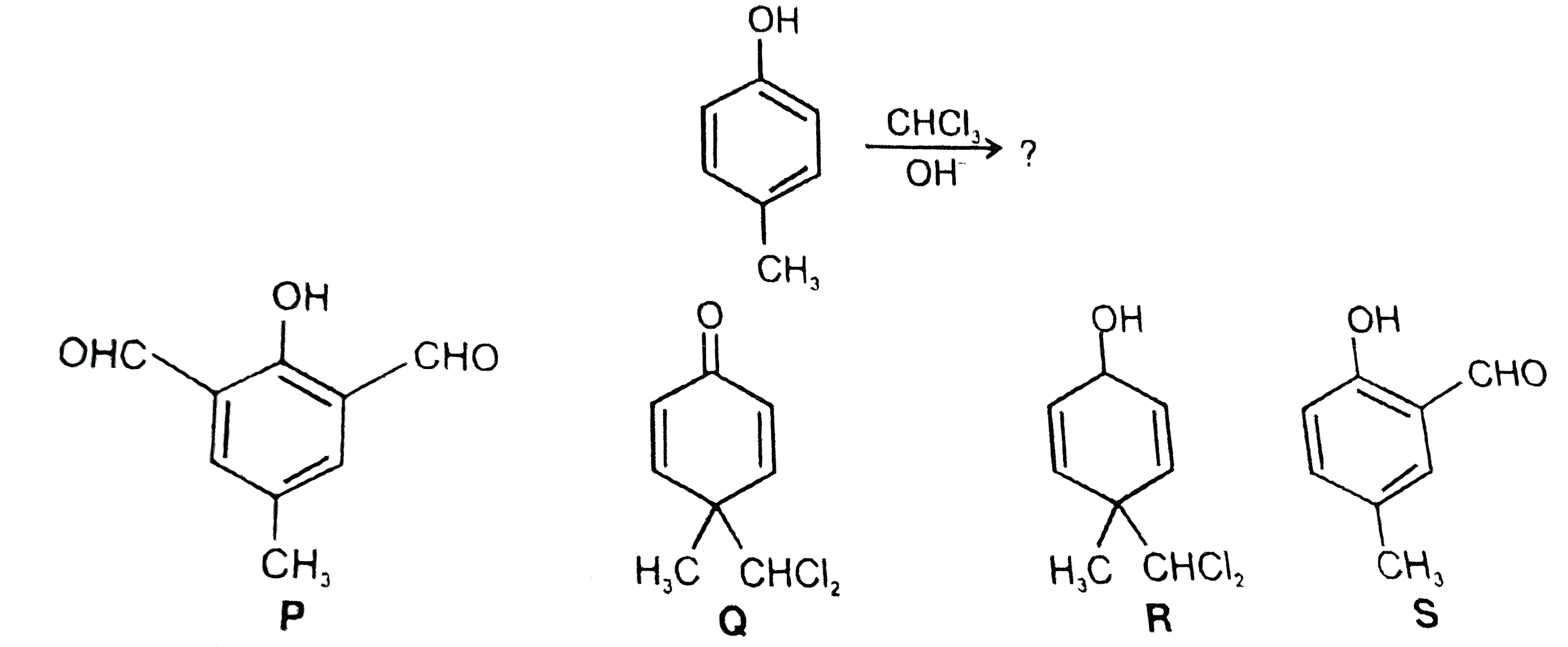
View SolutionThe major product(s) of the following is (are):
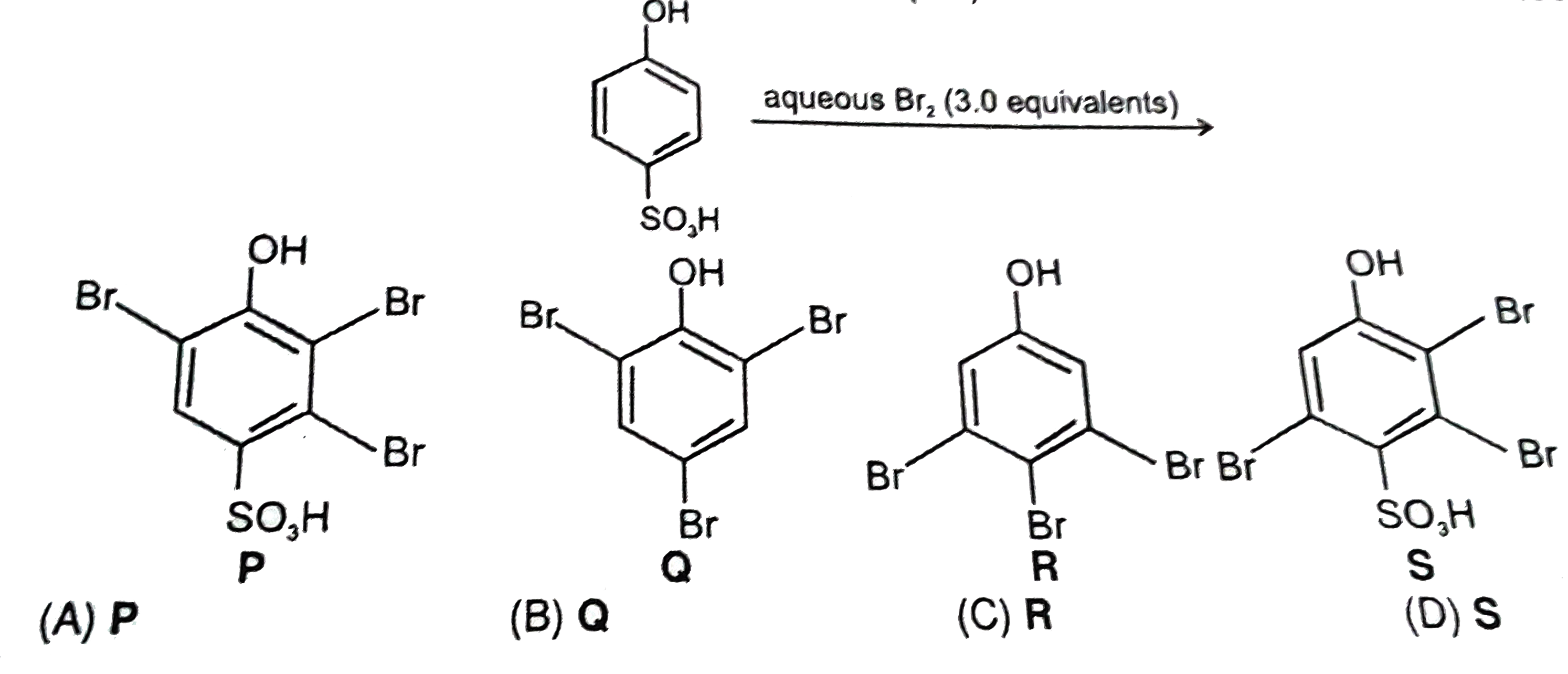
View SolutionP and Q are isomers of dicarboxylic acid `C_(4)H_(4)O_(4)`. Both decolorize `Br_(2)//H_(2)O`. On heating, P forms the cyclic anydride.
Upon treatment with dilute alkaline `KMnO_(4)`, p as well as Q could produce one or more than one from the S,T and U
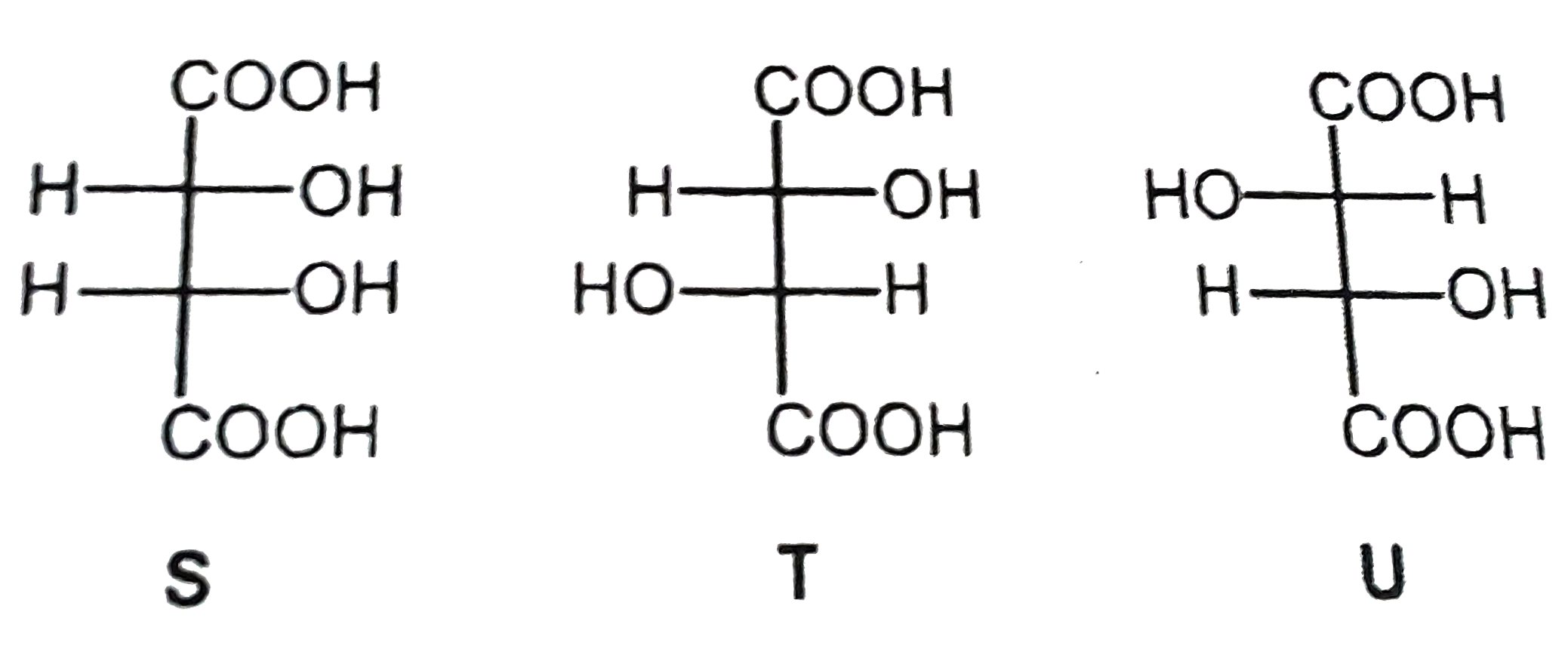
Compounds formed from P and Q are, respectively:
View SolutionIn the following reaction, sequences V and W are respectively.

View SolutionThe reactivity of compound `Z` with different halogens under appropriate conditions is gives below-

The observed pattern of electrophilic substitution can be explained by-
View SolutionThe the identification of `beta`-napthol using dye test, it is necessary to use:
View SolutionMatch the four starting materials (P,Q,R,S) gien in List-I with the corresponding reaction schemes (I,II,III,IV) provided in List II and select the correct answer using the code given below the lists.
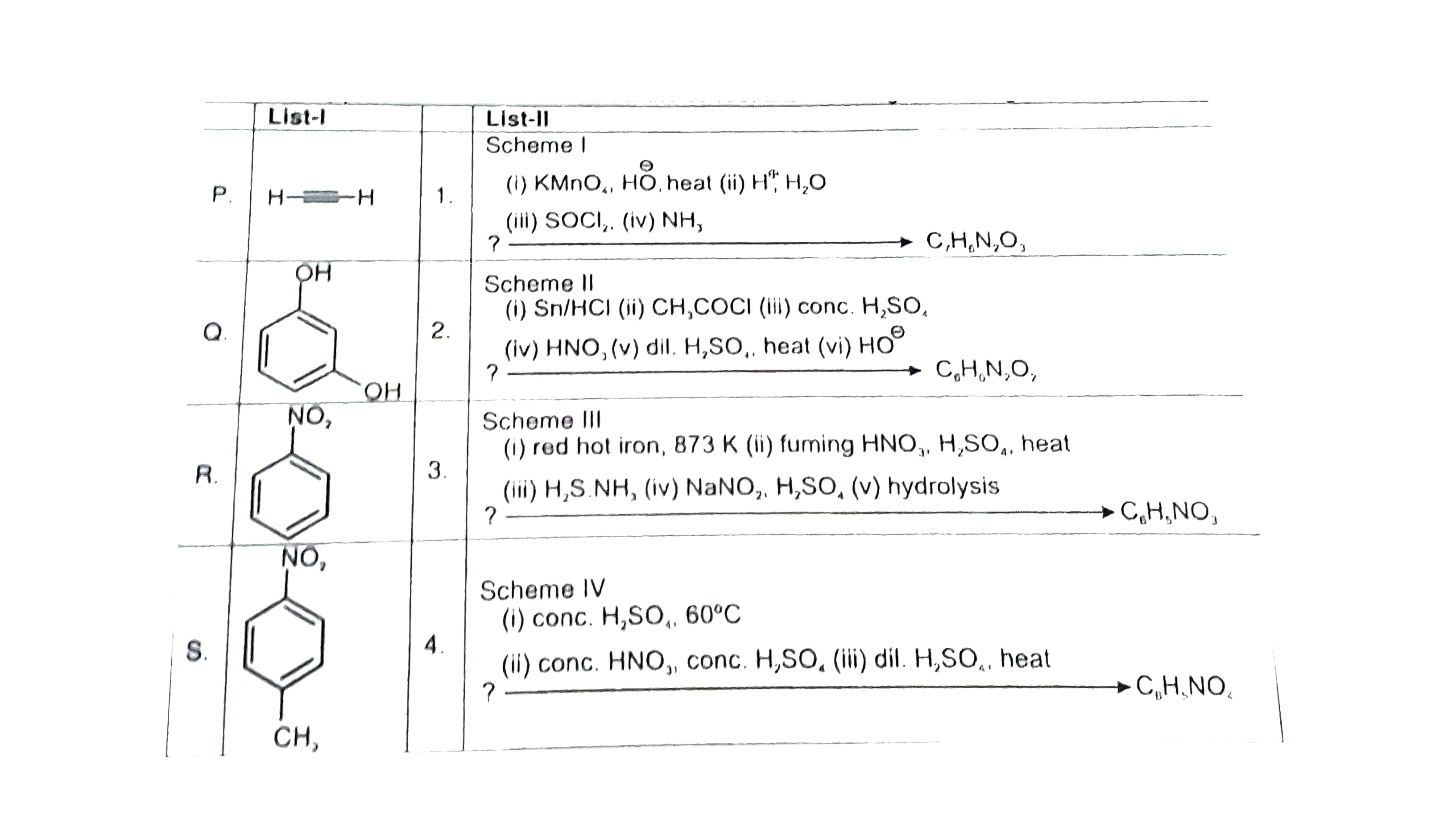
View SolutionAmong the following, the number of reaction(s) that produce(s) benzaldehyde is

View SolutionThe major product U in the following reactions is

View Solution
In the following reactions, the major product W is:
View SolutionThe product(s) of the following reactions sequence is(are)

View SolutionThe correct statement(s) about of the following reaction sequence is(are)
`"Cumene"(C_(9)H_(12))underset((ii)H_(3)O^(+))overset((i)O_(2))rarrPoverset(CHCl_(2)//NaOH)rarrQ("major")+R("minor")`
`Qunderset(PhCH_(2)Br)overset(NaOH)rarrS`
View SolutionThe major product of the following reaction is
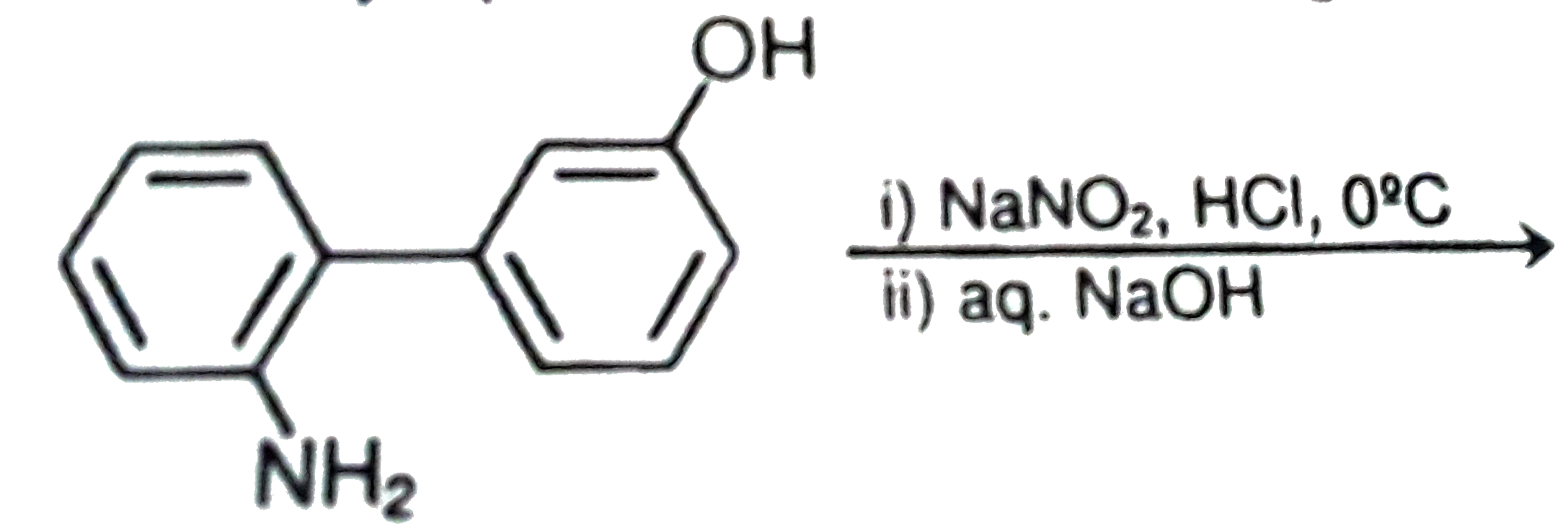
View SolutionThe reaction of compounf P with `CH_(3)MgBr` (excess) in `(C_(2)H_(5)_(2)O` followed by addition of `H_(2)O` give Q the compound Q on treatment with `H_(2)SO_(4)`at `0^(@)` C gives R. the reaction of R with `CH_(3) COCl` in the presence of anhydrous `AlCl_(3)"in" CH_(2)Cl_(2)` followed by treatment with `H_(2)O` produces compound S. [Et in compound P is ethyl group] The product S is

View SolutionThe reaction of compounf P with `CH_(3)MgBr` (excess) in `(C_(2)H_(5)_(2)O` followed by addition of `H_(2)O` give Q the compound Q on treatment with `H_(2)SO_(4)` at `0^(@)` C gives R. the reaaction of R with `CH_(3) COCl` in the presence of anhydrous `AlCl_(3)` in `CH_(2)Cl_(2)` followed by treatment with `H_(2)O` "produces compound S`. [Et in compound P is ethyl group]
The reaction, Q to R and R TO S, are
View SolutionThe reaction(s) leading to the formation of 1, 3, 5 -trimethylbenzene is (are)
View SolutionAniline reacts with mixed acid conc. `HNO_(3)` and conc. `H_(2)SO_(4)` at 288 K to give P (51 %), Q (47%) and R (2%). The major product(s) of the following reaction sequence is (are)
View SolutionIn the following reaction sequence, the amount of D (in g) formed from 10 moles of acetophenone is ____. (Atomic weights in g `mol^(-1)` : H = 1, C = 12, N = 14, O = 16, Br = 80. The yield (%) corresponding to the product in each step is given in the parenthesis)

View Solution
Exercise -3 Part-I questions and complete solutions for chapter AROMATIC COMPOUNDS of RESONANCE ENGLISH of Class 11
All Exercises from RESONANCE NEW Class 11 CHEMISTRY AROMATIC COMPOUNDS
- Exercise -2 Part-I only one option correct type
- Exercise -3 Part-I
- JEE(MAIN) ONLINE PROBLEM
- Part III- Match the column
- PART IV- COMPREHENSION
- PART-I PRACTICE TEST-1(IIT-JEE MAIN PATTERN)
- PART-I SUBJECTIVE QUESTIONS
- PART-II : JEE (MAIN)
- PART-II JEE MAIN
- PART-II ONLY ONE OPTION CORRECT TYPE
- PART-II SINGLE OR DOUBLE INTEGER TYPE
- PART-II: NATIONAL STANDARD EXAMINATION IN CHEMISTRY (NSEC) STAGE-I
- PART-III ONE OR MORE THAN ONE OPTION CORRECT TYPE
- PART-III: PRACTICE TEST-2(IIT-JEE(ADVANCED pattern))
- Section -2 (one or more than one options correct type)
- Section B
- Section C
- Section-4: Comprehension type(Only one options correct)
- Section-B Nitrogen containing compounds
- Section-C Benzene diazonium salt and its reactions